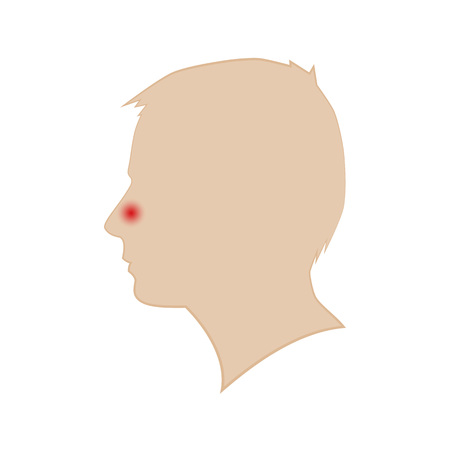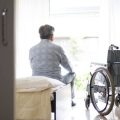1. Understanding Articulation Disorders
Articulation disorders are speech sound disorders where a child has trouble making certain sounds correctly. These issues can show up as substitutions, omissions, additions, or distortions of speech sounds. For example, a child might say “wabbit” instead of “rabbit” or leave off the ending sounds in words. While some mispronunciations are normal as children learn to talk, persistent difficulties may indicate an articulation disorder that needs attention.
How Articulation Disorders Present in Children
Children with articulation disorders may have trouble producing specific consonant or vowel sounds. This can make their speech hard for others to understand, especially people outside their immediate family. Some common signs include:
- Consistent mispronunciation of certain sounds (like “th,” “r,” “l,” or “s”)
- Substituting one sound for another (e.g., saying “thoup” for “soup”)
- Leaving out sounds in words (e.g., saying “ca” for “cat”)
- Distorting sounds so they dont sound quite right
Examples of Common Articulation Errors
| Error Type | Description | Example |
|---|---|---|
| Substitution | Replacing one sound with another | “wed” for “red” |
| Omission | Leaving out a sound | “poon” for “spoon” |
| Addition | Inserting an extra sound | “buhlack” for “black” |
| Distortion | Saying a sound incorrectly but not as a different phoneme | Lisped “s” in “sun” |
Why Accurate Speech Matters in the United States
Clear and accurate speech is essential for children’s success both in and out of school. In American classrooms, students are often asked to participate in discussions, answer questions aloud, and work on group projects. If a child’s speech is difficult to understand, it can affect their confidence and willingness to speak up. Socially, children who are hard to understand may have trouble making friends or be at risk for teasing and exclusion.
The Importance of Speech Accuracy: Academic and Social Impact
| Area of Life | Impact of Articulation Disorders |
|---|---|
| Academic Success | Might struggle with reading aloud, classroom participation, and language-based tests. |
| Social Skills | Difficulties making friends, risk of being misunderstood or left out during play. |
| Self-Confidence | May feel embarrassed or frustrated when others cant understand them. |
Key Takeaway
If you notice your child is having trouble being understood by people outside your family after age four, it could be time to talk with a speech-language pathologist. Early support can make a big difference in helping kids communicate clearly and confidently as they grow.
2. Common Causes of Articulation Disorders in Children
Articulation disorders in children can happen for a variety of reasons. Understanding these causes helps parents, teachers, and therapists support children more effectively. In the United States, several main factors influence how clearly a child speaks. These can be grouped into developmental, structural, neurological, and environmental causes.
Developmental Factors
Most children learn to say sounds at certain ages. Sometimes, their speech develops more slowly than expected. This is known as a developmental delay. For example, it is normal for young children to mispronounce some sounds, but if mistakes continue past the typical age range, it may be an articulation disorder.
Typical Ages for Speech Sound Development
| Speech Sound | Usually Mastered By (Age) |
|---|---|
| /p/, /m/, /b/ | 2-3 years old |
| /t/, /d/, /n/ | 2-4 years old |
| /k/, /g/, /f/ | 3-4 years old |
| /s/, /z/, /l/, /r/ | 5-7 years old |
Structural Factors
Certain physical differences can affect how a child produces speech sounds. These include:
- Cleft palate or lip: Openings or splits in the roof of the mouth or lip can make it hard to form sounds correctly.
- Dental issues: Missing teeth, misaligned teeth, or bite problems can impact articulation.
- Tongue tie (ankyloglossia): If the tissue connecting the tongue to the bottom of the mouth is too tight, it can limit tongue movement.
Neurological Factors
The brain controls how we move our lips, tongue, and jaw to speak. Some conditions that affect the brain or nerves can cause articulation problems. These include:
- Cerebral palsy: This affects muscle control and coordination.
- Childhood apraxia of speech: The brain has trouble planning and coordinating the movements needed for speech.
- Traumatic brain injury: Injuries from accidents can sometimes impact speech muscles or coordination.
Environmental Factors
A childs environment also plays a role in speech development. Some key factors are:
- Lack of exposure: Children who do not hear enough spoken language may develop speech more slowly.
- Bilingual homes: Learning two languages is not a cause by itself, but sometimes children mix sounds as they learn both languages.
- Hearing loss: If a child cannot hear certain sounds clearly due to frequent ear infections or permanent hearing loss, they might have trouble producing those sounds correctly.
- Poor speech models: If adults around the child use unclear speech or slang often, children may imitate these patterns.
Main Causes of Articulation Disorders: Quick Overview
| Category | Description/Examples |
|---|---|
| Developmental | Maturing slower than peers; late sound mastery |
| Structural | Cleft palate/lip, dental issues, tongue tie |
| Neurological | Cerebral palsy, apraxia of speech, brain injury |
| Environmental | Lack of language exposure, hearing loss, poor models at home/school |
The causes of articulation disorders are often unique for each child. Early identification and understanding these factors help families and professionals find the best ways to support childrens communication skills.

3. Assessment and Diagnosis in a US Context
Accurately assessing and diagnosing articulation disorders in children is a critical first step to providing effective intervention. In the United States, speech-language pathologists (SLPs) follow standardized procedures and tools, but also consider cultural and linguistic diversity to ensure fair and accurate evaluations.
Standard Assessment Tools Used by SLPs
SLPs across the US commonly use a combination of standardized tests, informal assessments, and observational strategies. These tools help identify specific articulation errors and their impact on a child’s communication.
| Assessment Tool | Description | Purpose |
|---|---|---|
| Goldman-Fristoe Test of Articulation (GFTA-3) | A widely used standardized test that evaluates consonant sound production in words and sentences. | Identifies articulation errors, tracks progress over time. |
| Khan-Lewis Phonological Analysis (KLPA-3) | Often used alongside the GFTA-3 to analyze phonological patterns in children’s speech. | Assesses underlying patterns of speech errors. |
| Informal Speech Sample Analysis | Collecting natural speech during play or conversation for analysis. | Observes real-world communication skills. |
| Cultural-Linguistic Interviewing | Gathering background information from families about language exposure and use at home. | Ensures assessment is culturally responsive. |
The Assessment Process Step-by-Step
- Referral: A parent, teacher, or pediatrician may refer a child for an evaluation if there are concerns about speech clarity.
- Case History: SLPs gather information about medical history, developmental milestones, languages spoken at home, and family concerns.
- Formal Testing: Standardized tests like the GFTA-3 are administered to evaluate articulation abilities compared to age norms.
- Informal Assessment: The SLP observes the child in different settings and collects spontaneous speech samples to supplement formal results.
- Cultural Considerations: The SLP ensures that assessment materials are appropriate for the childs cultural and linguistic background. This might include using interpreters or adjusting expectations based on bilingual language development.
- Synthesis and Diagnosis: All data are analyzed together. The SLP determines whether an articulation disorder is present and discusses findings with the family in understandable terms.
Culturally Responsive Evaluation: Why It Matters
The US is home to families from diverse backgrounds. Culturally responsive evaluation means that SLPs look beyond just test scores. They ask questions such as:
- Is the child learning more than one language?
- Are speech patterns influenced by dialect or accent?
- Are differences due to normal second language development rather than a true disorder?
This approach helps avoid misdiagnosis and ensures every child receives care tailored to their unique needs. By combining standardized tools with cultural sensitivity, SLPs strive to provide fair, accurate, and supportive assessments for all children across America.
4. Traditional and Innovative Treatment Approaches
When it comes to helping children with articulation disorders, American clinicians use a blend of time-tested methods and exciting new technologies. Let’s take a closer look at both classic and modern approaches that are shaping speech therapy in the United States today.
Classic Therapy Techniques
For many years, speech-language pathologists (SLPs) have relied on well-established strategies to address articulation issues. These techniques are supported by strong evidence and remain essential tools in therapy.
| Technique | Description | Common Use |
|---|---|---|
| Articulation Drill Practice | Children repeat specific sounds, words, or phrases to improve clarity and accuracy. | Works well for single-sound errors and generalization. |
| Auditory Discrimination Training | Kids learn to hear the difference between correct and incorrect sounds. | Helpful for children who struggle to self-correct errors. |
| Phonetic Placement Techniques | SLPs provide visual or tactile cues (like using a tongue depressor) to show correct sound placement. | Useful when a child has trouble figuring out how to move their mouth or tongue. |
| Minimal Pairs Therapy | Pairs of words that differ by only one sound are used to highlight contrasts (e.g., “bat” vs. “pat”). | Effective for children who substitute one sound for another. |
Innovative Strategies and Technologies in American Practice
The field of speech therapy is constantly evolving. Many American clinics are embracing new tools and creative solutions to engage kids and track progress more effectively.
Technology-Enhanced Interventions
- Speech Apps: Interactive mobile apps provide fun practice opportunities at home or during sessions. Popular options include Articulation Station and Speech Blubs.
- Biofeedback Devices: Tools like Speech Buddies or Palatometer give real-time feedback on tongue placement, helping children adjust their speech movements more accurately.
- Telerapy: Virtual speech therapy sessions have become widely accepted, especially since the COVID-19 pandemic, offering access to services regardless of location.
Culturally Responsive Therapy Approaches
- Family Involvement: SLPs often work closely with families, offering home practice ideas tailored to each child’s daily life and cultural background.
- Bilingual Support: Therapists consider a child’s home language(s) and cultural context, making sure assessments and interventions are appropriate for bilingual children.
Comparing Classic and Modern Approaches
| Classic Techniques | Innovative Approaches | |
|---|---|---|
| Main Focus | Direct practice of sounds in structured settings | Engagement through technology, real-world practice, family involvement |
| Tools Used | Pictures, word lists, mirrors, tactile cues | Apps, teletherapy platforms, biofeedback devices, video modeling |
| Access & Flexibility | Mainly in-person sessions with an SLP | Remote access possible; flexible scheduling; more parent participation |
No matter which approach is used, the most effective treatment plans are those tailored to each child’s unique needs. Many American therapists combine both traditional methods and new innovations to help every child reach their communication goals.
5. Family Involvement and Community Resources
When supporting children with articulation disorders, families play a crucial role in the therapeutic journey. Active family involvement not only helps children practice their speech skills at home but also boosts their confidence and motivation. This section offers practical guidance for families and highlights key community resources across the United States.
How Families Can Engage in the Therapeutic Process
Families can make a big difference by participating in therapy sessions, asking questions, and learning strategies from speech-language pathologists (SLPs). Here are some ways families can get involved:
- Practice at Home: Use speech games or daily routines to reinforce sounds learned in therapy.
- Communicate with Educators and Therapists: Stay updated on progress and collaborate on goals.
- Create a Supportive Environment: Encourage positive self-talk and celebrate small successes.
- Attend Workshops: Many clinics and schools offer parent training events focused on speech development.
Finding Local and National Support Systems
Families can access various support systems to help their child with an articulation disorder. Below is a table summarizing helpful US-based resources:
| Resource Type | Name/Organization | Description | Website |
|---|---|---|---|
| National Organization | American Speech-Language-Hearing Association (ASHA) | Provides information, therapist directories, advocacy resources, and educational materials. | asha.org |
| Parent Support Network | The Stuttering Foundation | Offers free resources, support groups, and webinars for families dealing with speech disorders. | stutteringhelp.org |
| Educational Accommodations | Your Local School District Special Education Department | Assists with Individualized Education Programs (IEPs), 504 plans, and classroom modifications. | N/A – Contact your local school district office |
| Advocacy Group | The Arc of the United States | Supports children with disabilities through advocacy, education, and community programs. | thearc.org |
| Online Community Forum | Speech Buddies Connect | An online platform connecting parents with SLPs and other families for advice and support. | speechbuddies.com/connect |
Navigating Educational Accommodations
If your child needs extra support at school, you can request an evaluation for special services. Common accommodations include:
- Extra time to respond during oral activities or tests.
- Simplified instructions or visual aids.
- Speech therapy provided within the school setting.
- Peer buddy systems to encourage communication practice.
Tapping Into Advocacy Organizations
Advocacy groups help families understand their rights and access necessary services. They can also provide legal advice if you encounter barriers to support in your local community. Connecting with these organizations empowers families to become strong advocates for their childrens needs.


